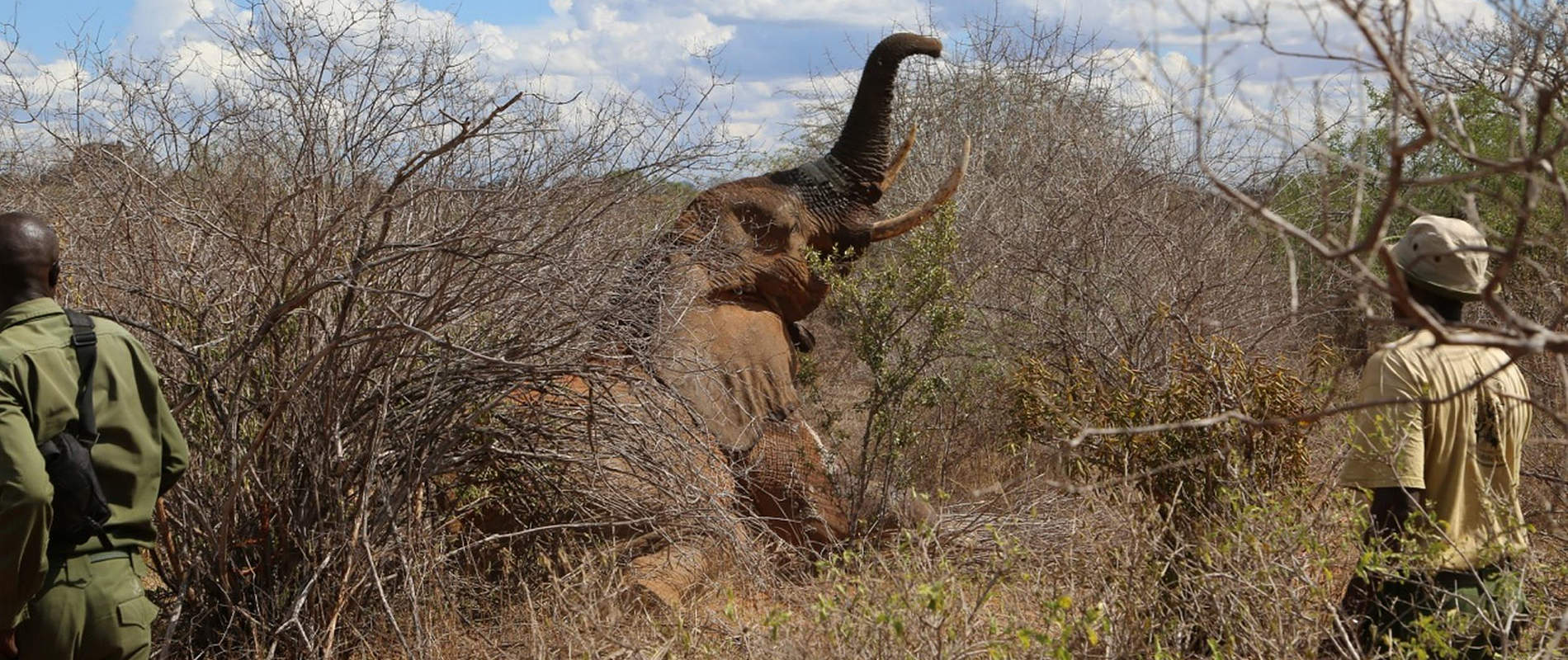VETERINARY CLINICAL INTERVENTIONS FOR THE SOUTHERN CONSERVATION AREA (MVU) – APRIL 2015 Report by; Dr
VETERINARY CLINICAL INTERVENTIONS FOR THE SOUTHERN CONSERVATION AREA (MVU) – APRIL 2015
Report by; Dr. Michael Njoroge
CASE#1 ELEPHANT TRANSLOCATION (MARCH-APRIL 2015)
The team kicked off the month with an ongoing elephant translocation from the Engaronii area in Kajiado County to the Aberdare National Park and Amboseli National Park. The translocation was carried out due to human-wildlife conflict. A total of 11 bulls were successfully translocated. The exercise was carried out by a combined team which included the veterinary and capture team and the Kajiado station.




CASE#2 POSTMORTEM REPORT AT ARABUKO SOKOKE NATIONAL PARK
Date of death: 13th April 2015
Date of postmortem: 16th April 2015
Species: Elephant
Age: 35 years
Sex: Female
Location: Arabuko Sokoke
History
This case was reported as a seriously sick elephant which had previously been treated but required retreatment. The elephant had suffered from a serious front left fore limb snare injury. The team responded to the call and searched for the elephant within the park for two days. She was finally found but had succumbed to the injury three days earlier. A postmortem was carried out and the following was observed.
Examination of the carcass
On general examination, the animal was in fair body condition and was on the left lateral side. She had a deep cutting injury to the limb which had lots of pus. The carcass also had lots of maggots.
The elephant could have succumbed to endotoxeamic shock due to the bone infection.
CASE#3 TREATMENT OF AN ELEPHANT WITH A BULLET WOUND
Date: 22nd April 2015
Species: Elephant
Sex: Male
Age: Adult (30-40 yrs)
Location: Ithumba, Tsavo West
History
The DSWT pilot at Ithumba reported to have spotted a male elephant with a left fore limb injury. The veterinary team had to locate and assess the elephant from the helicopter since the vegetation was thick. Plans were made to immobilize and treat the elephant. The elephant was in a thick bush thicket so the darting was done from foot with the aerial support of a light aircraft.
Immobilisation, examination and treatment
The elephant was darted with 18mg Etorphine 18mg topped up with water in a 3 ml dan - inject dart from foot due to the thick vegetation. The elephant went down on lateral recumbence after 18 minutes. The trunk was maintained patent using a piece of stick placed across the nostril entrances. The temperature was high so plenty of water was doused on the elephant to keep the body temperature low. The ears were used as blindfold.
On physical examination the elephant had an approximately 8 inch deep wound (1-2 weeks old) on the left fore limb. The wound was septic and the tissue necrotic; likely to have been caused by a bullet. The dead tissue was debrided and removed then thoroughly cleaned using clean water and Hydrogen Peroxide. It was lavaged using tincture of Iodine and then topical antibiotic cream and green clay applied into the wound to facilitate healing and avoid infection. The elephant was injected with 100ml Betamox, 1200 mg Clindamycin (Dalacin C) and 100ml Dexamethasone at different sites intramuscularly.The entire operation lasted about 40 minutes.


Reversal
The anaesthetic was reversed using Diprenorphine Hydrochloride (60mgs) into the ear vein. It took about 5 minutes to be fully awake from anaesthesia.


Prognosis
Good
The Southern Conservation Area Mobile Veterinary Unit is grateful to all individuals who played a role in assisting us towards achieving our goal. Many thanks to The David Sheldrick Wildlife Trust, The Samuel J and Ethel Lefrak charitable trust and The Kenya Wildlife Service for their continued support to this unit which aims at immediate response to clinical intervention, wildlife rescues and alleviating wildlife suffering.








